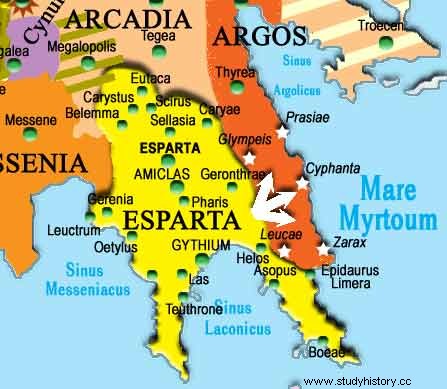At the end of the VIII century a. C. Sparta and Messenia they clashed in the so-called first messenian war , of which there would be two more. Sparta was growing and needed new lands to settle its population... the fertile lands of Messenia were its objective. In this war there were no decisive battles that decided victory for one side or the other, it was rather a campaign of harassment and demolition, which lasted longer than necessary for the interests of the Spartans... 19 years .

The population of Sparta was made up of citizens with all rights and slaves (the periecos , subdued without the use of force, and the helots , of lands conquered by force). The ratio during times of peace was 20 slaves for each Spartan, but in times of war, as the army was composed only of Spartans, the ratio skyrocketed. As the conflict with Messenia dragged on too long, the Gerousia (the governing body), for fear of the possible uprising of the slaves and in view of the heavy casualties suffered, imposed the eunomia (equality of all before the law). During this period of time, when everyone was equal, there were many births of the so-called Parteni (children of Spartan women with slaves or with young warriors who were sent back home when the conflict dragged on, in order to procreate and avoid a shortage of future men).
With the victory of Sparta and the return of the bulk of the army, eunomia was repealed and the parteni became equal to illegitimate children . Faced with such injustice they rebelled, but the Spartans put down the revolt and expelled them. In 706 BC, and led by Phalanto , arrived in the south of the Italian peninsula and founded Tarento .
Source:The Greek cities of Magna Graecia and Sicily – Luca Cerchia, The citizens of Sparta, Lycurgus and Sparta,
